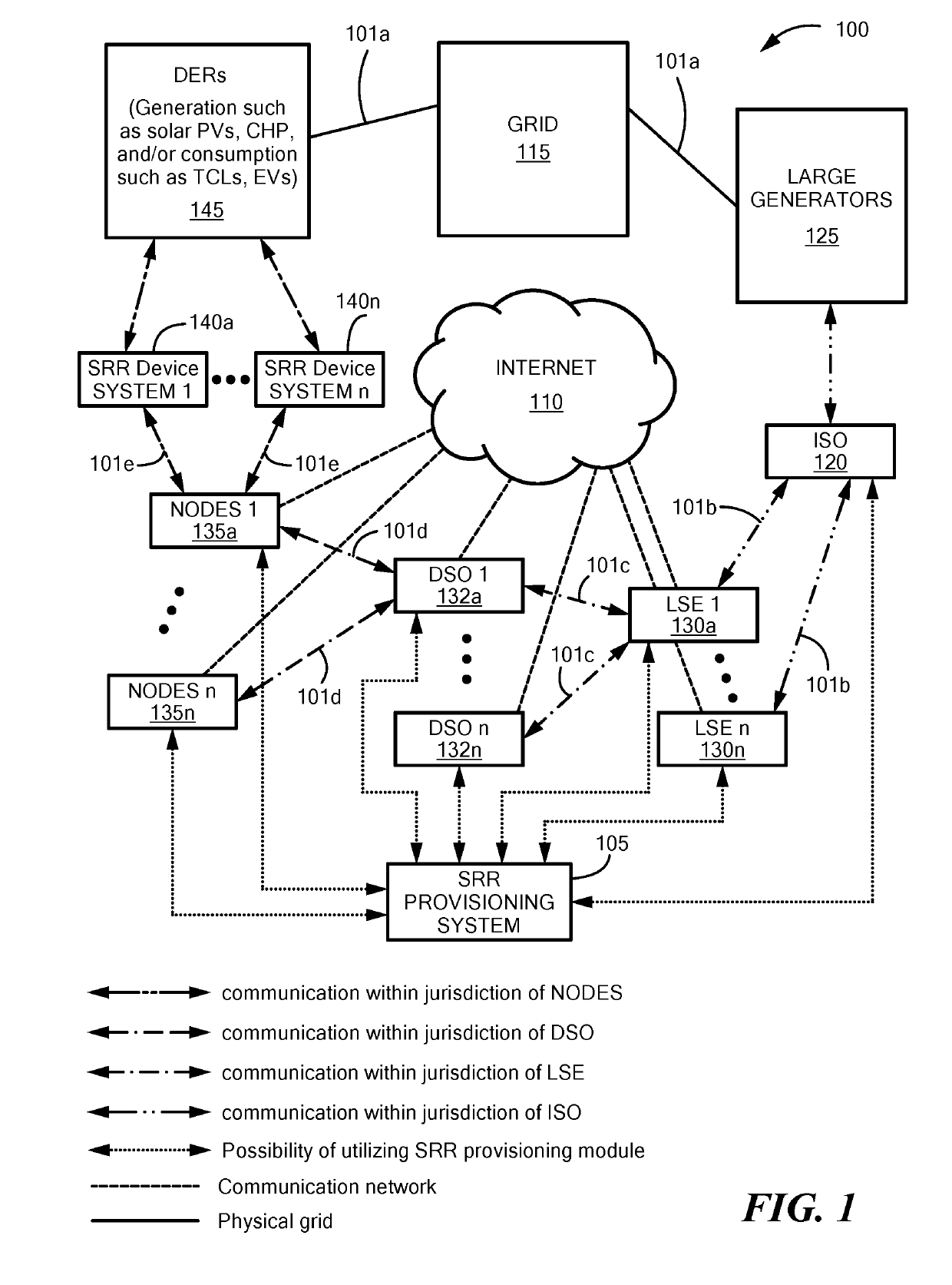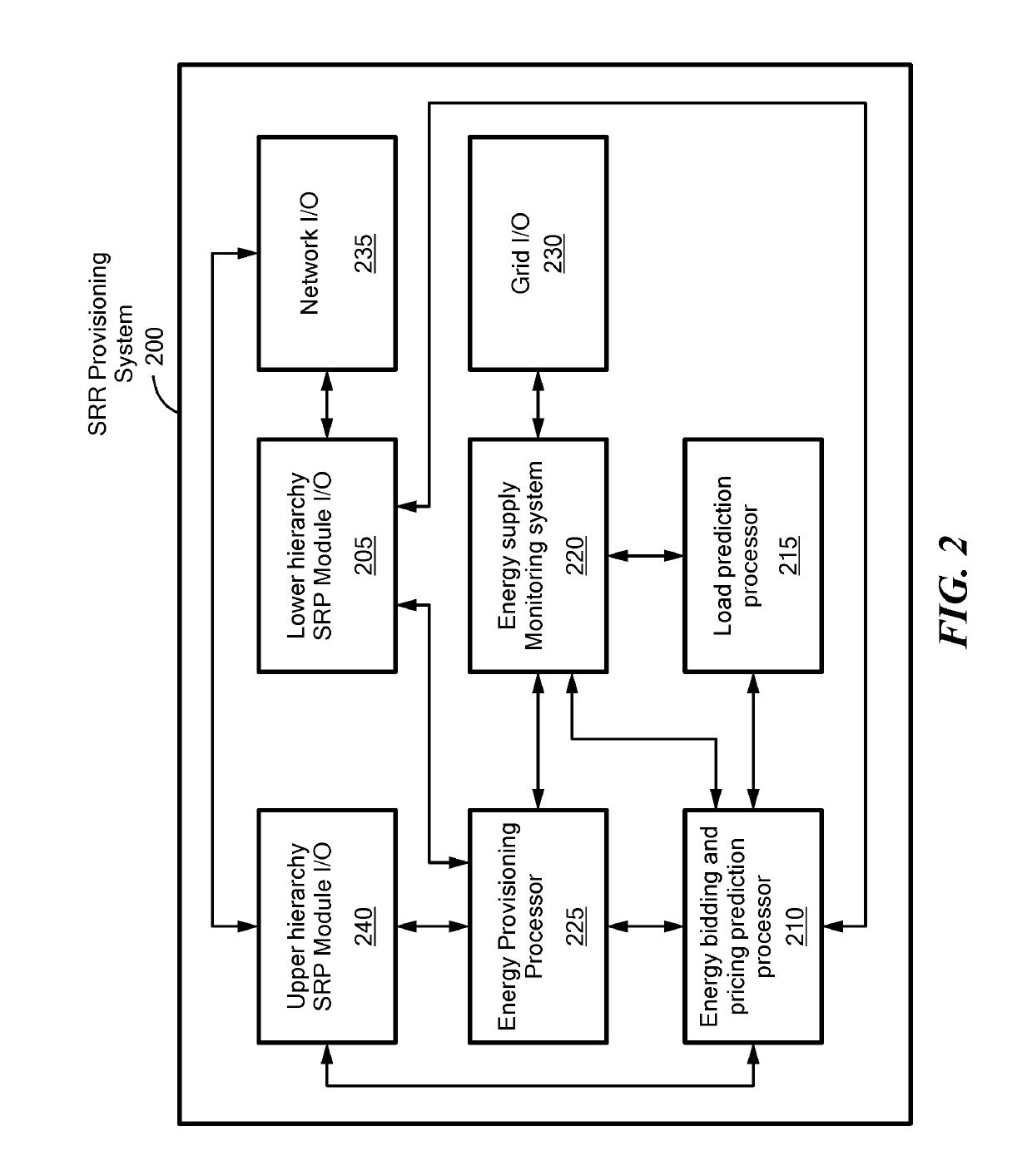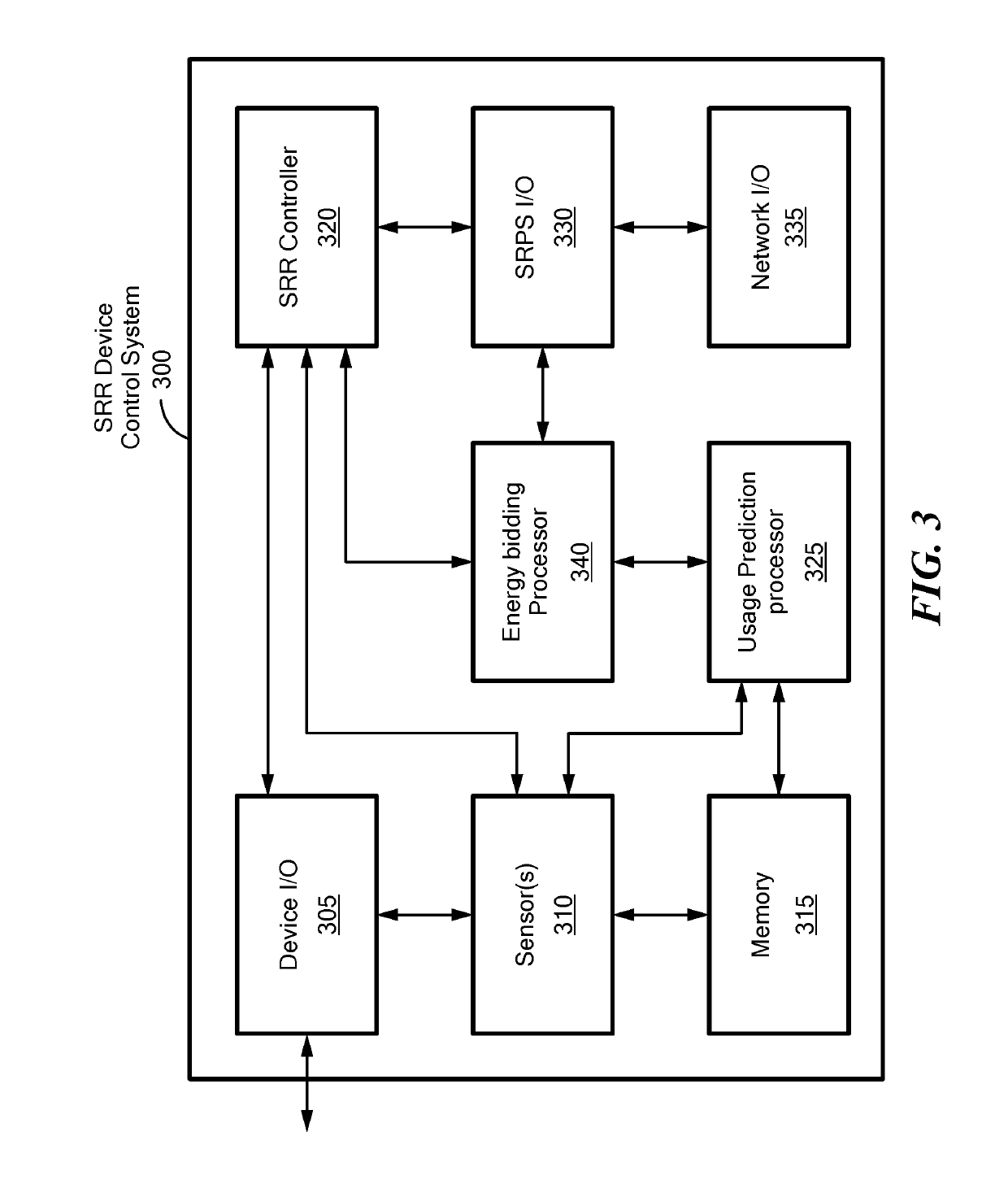Methods and systems for secure scheduling and dispatching synthetic regulation reserve from distributed energy resources
a technology of distributed energy resources and synthetic regulation reserves, applied in the direction of load forecasting in ac networks, instruments, ac networks with energy trading/transmission rights, etc., can solve the problem of high unpredictability of net demand, inaccurate feedback signals, and high “ramp requirements” , to achieve the effect of reducing energy consumption
- Summary
- Abstract
- Description
- Claims
- Application Information
AI Technical Summary
Benefits of technology
Problems solved by technology
Method used
Image
Examples
Embodiment Construction
[0040]Referring now to FIG. 1, a portion of a complex electric energy system 100 includes an electric power grid 115 (also referred to as an “electric grid” or more simply a “grid”) formed from a network of synchronized power providers and consumers. Power providers may, for example, correspond to one or more electrical power generation sources 125 and distributed energy resources or DERs 145 coupled via electrical transmission lines 101a (also referred to as power lines). DERs 145 also include consumption devices (i.e. power consumers). Generators 125, DERs 145 and electrical wires (e.g. power lines) 101a all form a portion of a so-called physical layer of system 100. The electric energy system 100 further comprises a communications layer (i.e., network) which may include, for example, internet 110.
[0041]In general, power generation sources 125 may be provided as nonrenewable energy sources (e.g., coal, natural gas, petroleum, nuclear, etc.) power plants (e.g. hydro-electric power ...
PUM
 Login to View More
Login to View More Abstract
Description
Claims
Application Information
 Login to View More
Login to View More - R&D
- Intellectual Property
- Life Sciences
- Materials
- Tech Scout
- Unparalleled Data Quality
- Higher Quality Content
- 60% Fewer Hallucinations
Browse by: Latest US Patents, China's latest patents, Technical Efficacy Thesaurus, Application Domain, Technology Topic, Popular Technical Reports.
© 2025 PatSnap. All rights reserved.Legal|Privacy policy|Modern Slavery Act Transparency Statement|Sitemap|About US| Contact US: help@patsnap.com



